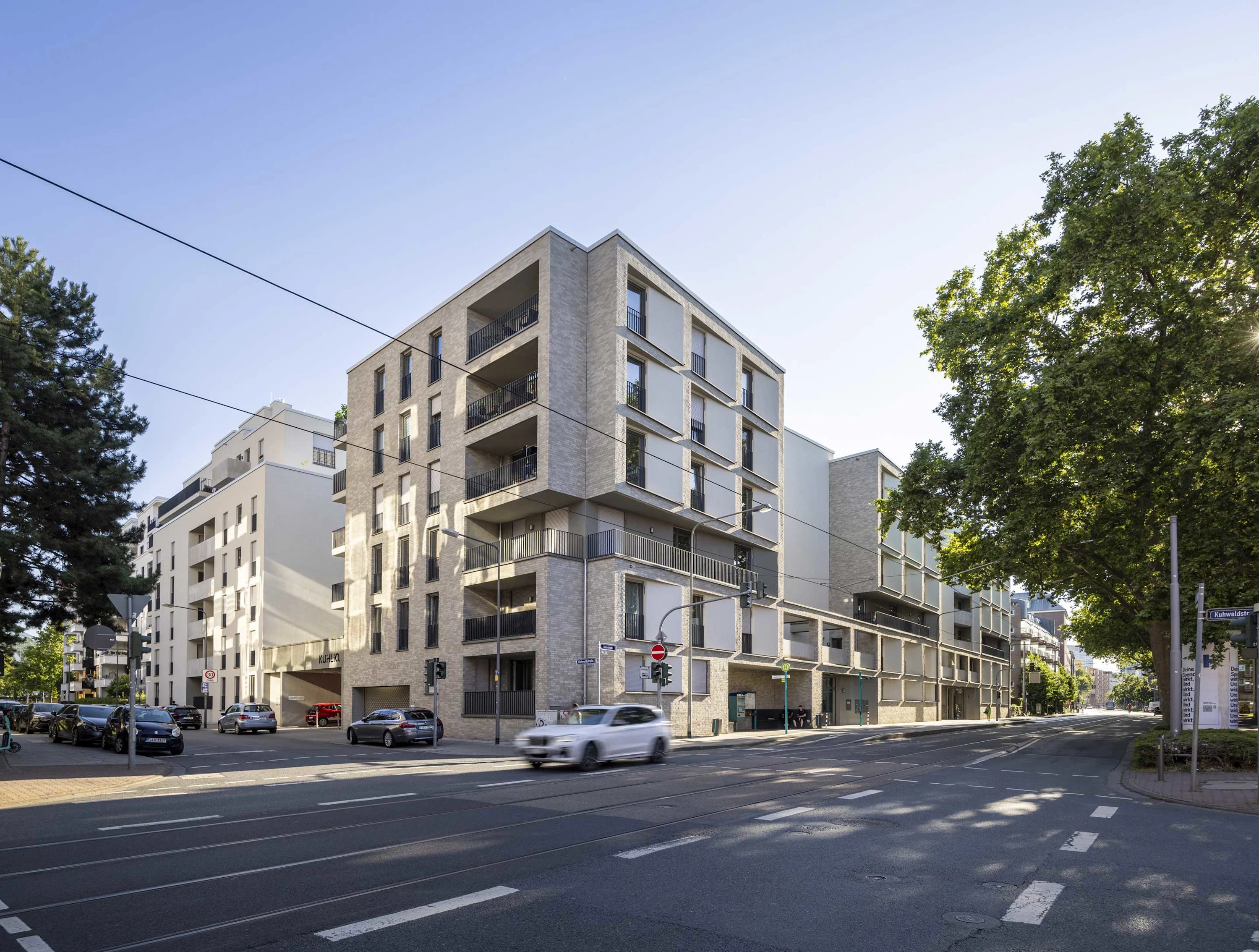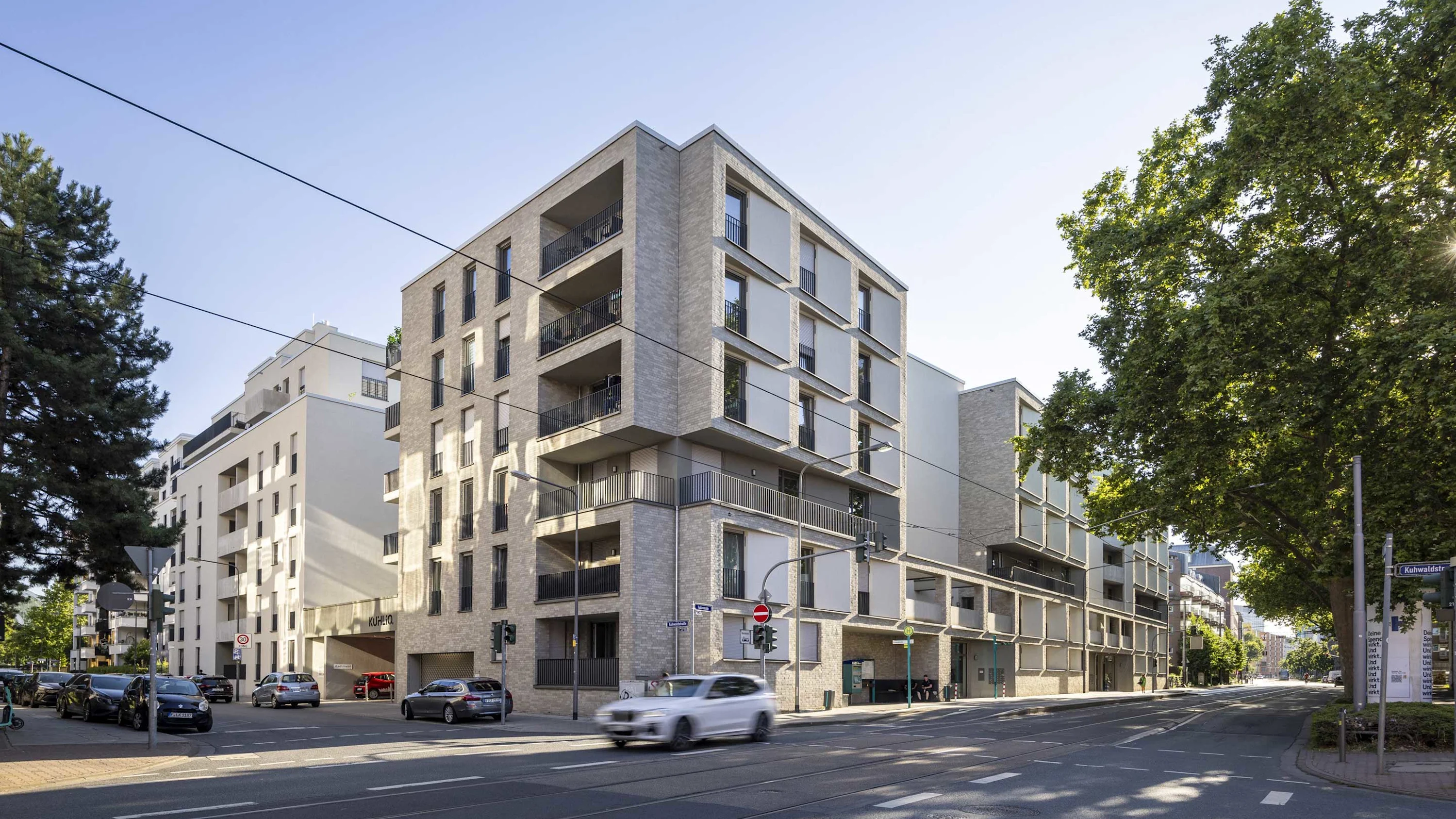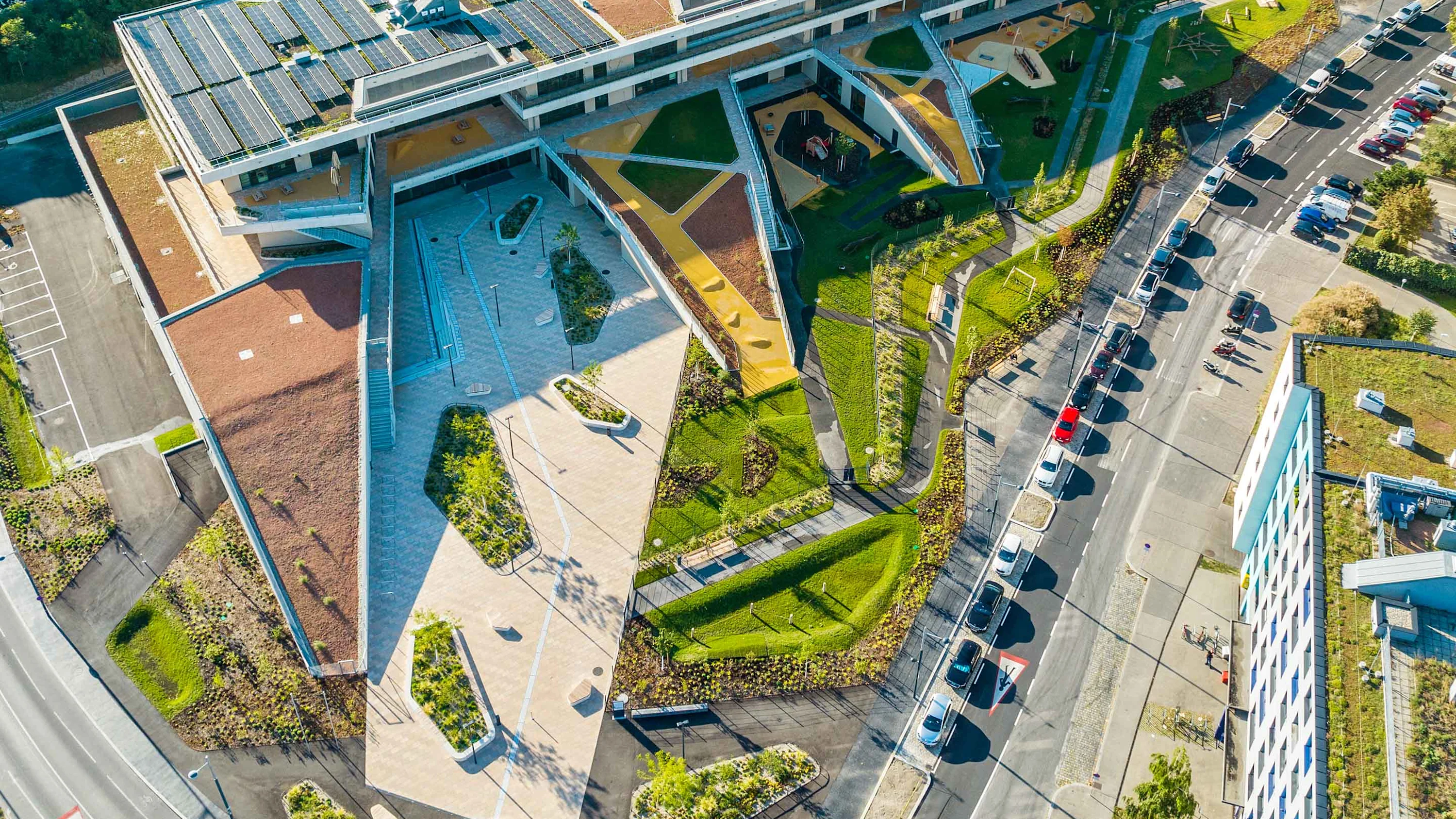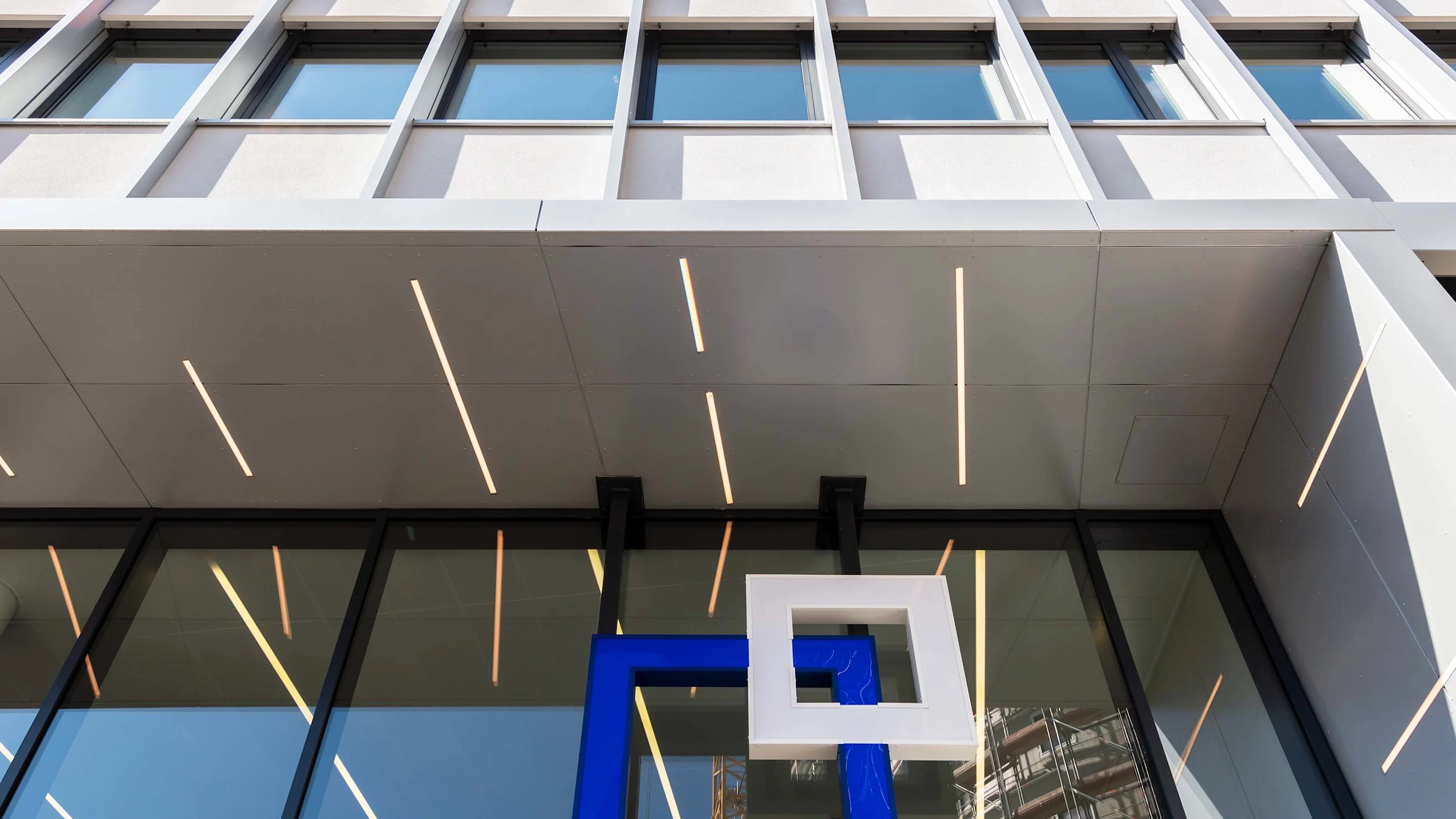News:Fighting urban overheating with real estate- part 1

by Marco Seltenreich

Wohnquartier Kuhlio in Frankfurt
© Jean Marc ClainThe increasing overheating of cities has also become a serious problem here, especially in recent years, and is being exacerbated by climate change and increasing urbanisation. As real estate developers, we play a crucial role in planning and designing our built living spaces to counteract these negative impacts. Neighbourhoods and real estate, whether residential or commercial, have the potential to have a significant impact on the urban microclimate and the quality of life of residents. Through sustainable and forward-looking planning, we can do a great deal to create urban living spaces that are resilient to heat and offer a high quality of life.
From the integration of green spaces and shade structures to the promotion of sustainable building materials and water management measures - our experts develop individual and tailor-made solutions in cooperation with other stakeholders and taking into account local needs that meet the specific requirements of the respective urban environment. Below we look at various aspects that should be considered in any development and planning:
Cooperative collaboration with experts:
As STRABAG Real Estate (SRE), we work closely with urban planners, architects, environmental experts and local communities to develop liveable neighbourhoods and sustainable real estate projects. The involvement of different stakeholders enables a holistic view and the integration of diverse expertise. This allows all project participants to respond to the different requirements and individual aspects in the best possible way.
Ample green space and shade:
The creation of green spaces and shade structures within the neighbourhoods is important to reduce overheating. Our planners integrate large-scale gardens, trees, and green spaces into all our SRE projects. These elements provide suitable retreat and recreation spaces for the residents, ensure sufficient shade, and improve the air quality. Heat is extracted from the environment via natural evaporation and the ambient air is cooled naturally.
Evaporative cooling is a natural and energy-efficient method of reducing ambient heat that will play an even greater role in urban and neighbourhood development in the future. Through the targeted use of evaporative cooling, we can reduce overheating and thus create more comfortable and sustainable living spaces. Unsealed surfaces can also store rainwater. These retention areas ensure that as little rainwater as possible has to be drained into the sewage system and is available to plants instead.
A showcase project in terms of green space planning is the KUHLIO in Bockenheim, one of Frankfurt's most up-and-coming districts. The SRE project is designed to maximise light and air: The entire development is criss-crossed by extensive green spaces that create room for neighbourhood courtyards, individual gardens, and communal green areas. This not only counteracts overheating in summer, but also offers the residents numerous opportunities for retreat. The KUHLIO was the first building in Germany to receive a Greenpass Gold certification.

KUHLIO
Frankfurt am Main
Type
- Living
Greening of the real estate:
The integration of green roofs, vertical greening, and green facades into the buildings themselves also prevent urban overheating. By creating green spaces on roofs and façades, the surface temperature is reduced, evaporation is increased, and the microclimate is improved. These measures help to reduce the urban heat island effect by reducing solar radiation on building surfaces, increasing evaporative cooling, and thus lowering temperatures in the surrounding environment. In addition, these sustainable measures also create new habitats for insects and microorganisms.

Heidemarie Lex-Nalis education campus
Vienna · Completed
Type
- Specialised real estate
- 1110 Vienna
- Education
Austrian showcase examples of projects with green facades are the Taborama in Vienna's Nordbahnviertel and the two private-public partnership projects Bildungscampus Landgutgasse and Bildungscampus Heidemarie Lex-Nalis in Vienna. At the Taborama, plants grow along long trellises, providing natural shade for the residents. A light-coloured façade additionally minimises heat build-up. The two new educational complexes also use plants on the façades to provide natural shade and offer habitats for animals through green terraces and roof areas. The large green areas are used by the children and adolescents as play, sports and retreat areas and provide sufficient shade.

Landgutgasse education campus
Vienna · Completed
Type
- Specialised real estate
- 1100 Vienna
- Education
In Germany, too, projects with green façades have been realised for years. Examples are the office building on the ZÜBLIN campus in Stuttgart in Albstadtweg, the KUHLIO in Frankfurt and the H3ö, probably the most sustainable office quarter in Hanover, where one of the three office buildings also has the nickname "Cleo - the green one". Vertically planted façade frames were integrated into the façades of "Cleo". The greenery evaporates water, provides shade, and ensures active cooling.
Sustainable urban and neighbourhood planning:
Positioning and orientation of properties in urban areas can have a significant impact on overheating. Intelligent urban and neighbourhood planning aims to minimise sealing, maximise green spaces and ensure optimal ventilation. For example, by incorporating shady structures and public parks into the design, real estate can contribute to a natural cooling of the environment. Our colleagues in the planning departments work closely with urban planners, architects, environmental experts and local communities. In order to develop sustainable solutions, it is necessary to take a holistic view of the projects and integrate a wide range of expertise.

Square One
Vienna · Completed
Type
- Office
- 1190 Vienna
Following the completion of the two SRE projects Square One and Square Two, the City of Vienna designed Leopold-Unger-Platz in Vienna's 19th district, where both commercial properties are located, as part of the "Raus aus dem Asphalt" initiative for the Muthgasse district. Particularly special about this is the integration of large green spaces with sufficient trees, shrubs and perennials, water features, drinking fountains, play areas and several seating areas, which provide a relaxing cool in summer and invite people to linger. In the second part of the article, you can read which other measures play an important role in the planning of real estate in order to minimise urban overheating.
In the second part of the article, you can read about the measures that still play a weighty role in the planning of real estate in order to minimize urban overheating.
Contact

